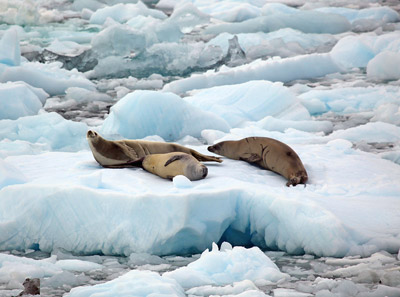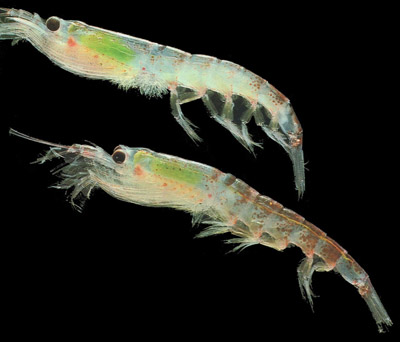Frequently Asked Questions about Antarctica
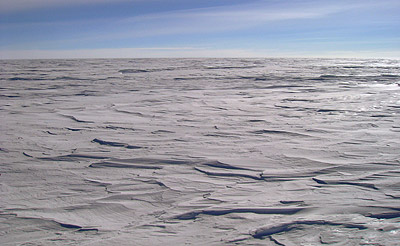
1/ Why doesn't
it rain in Antarctica ?
The simple answer is that it's
too cold. What would be rain falls as snow instead, but
not very much of that falls either, Antarctica is classed
as a desert as so little snow falls, it's just that
being so cold, it doesn't go anywhere and so builds
up until it's kilometers thick. Actually, even much
of that "snow" isn't really snow but ice crystals
that form in the air, fall out and accumulate very slowly
over time.
The snow/ice fall can be measured
by melting it and measuring the water produced, it is called "precipitation
equivalent", the amount that would have fallen if it
had been rain.
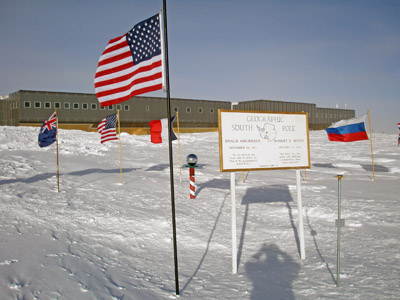 2/ Where is the South
Pole ?
2/ Where is the South
Pole ?
Unlike the North Pole the South Pole is inland. It is near
the middle of the Great Antarctic ice sheet at an altitude
of 2,800m (9,186 ft). It is 1,230 km (764 miles) from the
nearest coast. The ice at the Pole is moving at about 10
m per year. Each year staff at the Amundsen-Scott (USA)
station at the South Pole move the marker flag to compensate
for the movement of the ice.
The Magnetic South Pole
(opposite to the Magnetic North Pole we all point our compasses
at) on the other hand doesn't have a fixed position,
it drifts about all the time travelling 10 to 15 km each
year. It was first reached during Shackleton's British
Antarctic Expedition (1907-1909) by Professor Edgeworth
David and Sir Douglas Mawson (Australian geologists) and
Alistair Mackay.
At that time the magnetic pole lay
within the Antarctic continent at latitude 71.6°S and
longitude 152°E. Today the Magnetic South Pole lies
far out to sea at latitude 64°S and longitude 137°E,
around 1,057km (660 miles) away from where it was. The pole wanders daily in
a roughly elliptical path around this average position,
and may be as far as 80 km (50 miles) away from this position
when the Earth's magnetic field is disturbed.
 3/ What do you pack in your survival kits?
3/ What do you pack in your survival kits?
Scientists in Antarctica generally
live on a base or station where everything is provided for
them. Like living in a hostel - except there aren't
any staff to do things for you! On most bases apart from
the specialist jobs, everyone takes it in turns to do the
mundane unskilled work. Near to many bases is a hut that
contains enough tents, clothing and food for a full base
compliment for about 18 months, just in case the base burns
down and they are left with nothing. Pretty bad news in
the middle of a Antarctic winter with no chance of rescue
for some months.
When going off base to stay in tents
or huts, there are sufficient rations for much longer than
the intended stay. The saying is "pitch your tent as
though you're there for a month, even though it may
only be a night" If the wind gets up, then a storm
could (and has in the past) kept the people in their tent
for a month, unable to leave because of the terrible weather.
In huts and tents away from the station, there is everything
needed to stay alive in really low temperatures. Paraffin
stove and lamp, loads of high energy food, synthetic camping
mat, air mattress and thick sheepskin on top of this, then
two huge great down-filled sleeping bags with a big hood,
and of course lots of layers of very warm clothing. Fuel
is very important too, there's plenty of frozen water
about but it needs melting for drinks and cooking, when
travelling most food is dehydrated to save weight and space.
 4/ How do people survive the cold in Antarctica
?
4/ How do people survive the cold in Antarctica
?
You wrap up warm in layers and several
of them. It's very important to properly cover the extremities
and places where heat might escape easily too, feet, ankles,
hands, wrists and your head. Mainly synthetic fibers these
days, not forgetting insulated footwear too. Clothes need
to be kept dry and clean to maintain their best insulating
qualities.
UV (ultra-violet) radiation is fierce
in the summer so wearing wrap-round goggles and sun screen
on any exposed skin is just as important as keeping warm
in the winter. It can be quite a surprise to get sun burnt
under your nose from the light reflected from snow and ice.
Survival is largely about not being caught out in the
worst weather, not getting lost in whiteout conditions and
not taking unnecessary risks. This means you must be well-trained
to carry out your activities, careful about how you dress
and work in a team where each member watches the others
for signs of "frost-nip" and hypothermia.
Food is very important. Clothing keeps the body heat
from escaping, plenty of nutritious food feeds the furnace
from the inside and helps generate warmth.
Despite
what people often assume, the Antarctic is not a place to
take risks, but a place where weather extremes are planned
for in advance and survival actions are a well rehearsed
drill.
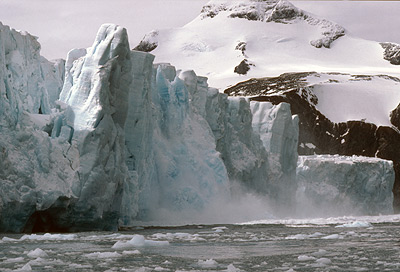 5/ Have you ever seen an ice berg fall into the
water?
5/ Have you ever seen an ice berg fall into the
water?
Yes, and I was only about 250m away from it in a small boat
at the time! It started with a bit of rumbling and a few
snowballs fell from the top, then a huge great column of
ice like a couple of office blocks slid into the water.
This caused an enormous wave and we thought for a while
that we'd be overwhelmed, but were ok after much rocking
about. It's one of those things that it's good to
be able to say happened to you, but you wouldn't choose
to do it!
The largest icebergs don't actually "fall"
off at all. Those huge flat (tabular) ones you may have
heard of, slide down to the sea as part of a glacier and
then start to float while still attached. Eventually after
many years of being pushed out into the sea a crack forms
and they float free, a much less exciting way of being formed
than smaller ones that can and do fall a long way with much
drama.
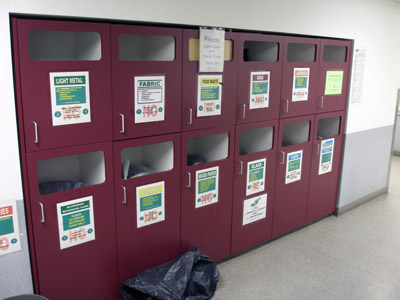
6/ Is there a rubbish (garbage) truck in
Antarctica?
Antarctic bases are much more
environmentally friendly these days than they used to be.
Most are small with around 15 people in winter and 50 in
summer, so there's no truck. Most waste is crushed and
segregated into different types before being taken out by
the ships that bring in the new supplies and dealt with
in the home country or a port where the ship calls.
Some countries still incinerate
waster that can be dealt
with in this way, though even with filters and efficient
burn systems, it is a less than ideal way to deal with waste.
7/ How many species
of animals live in Antarctica?
It is impossible to give a precise
answer for a number of reasons, though generally as you
move away from the tropics towards colder climates, there
is a general reduction in the number of species, but increase
of numbers of individuals of a species. So Antarctica has
not so many different types of animals - but loads of each,
the tropics have loads of types, but not so many of each.
The second most numerous mammal in the world after man is
the crabeater seal - a typical Antarctic animal.
There is a much greater variety
of species in the sea than on the land. In recent years,
the life in the seas has been studied more closely and there
have been found to be many more species living there than
previously thought. Also, as the seas warm up, even slightly,
more northerly marine species are able to move further south
into waters that previously were too cold for them. The
Census of Marine Life in 2010 found that there were between
230,000 and 250,000 marine species in the world's oceans
of which about 7,500 or 3% are found in the Antarctic.
8/ What sort of
clothes do you wear in Antarctica?
Thin layers and several of
them. It's very important to cover ankles, wrists and
your head. Mainly synthetic fibers these days.
More on Antarctic
clothing
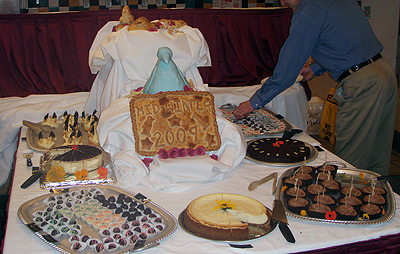 9/ What happens if you run out of food?
9/ What happens if you run out of food?
Unlikely (see above), in the
extreme case we had rifles and skinning knives in order
to capture and eat penguins and seals. At my base I was
a marine biologist, so we had boats and nets and could have
caught fish to eat (in fact we did eat some of the extra
ones we caught).
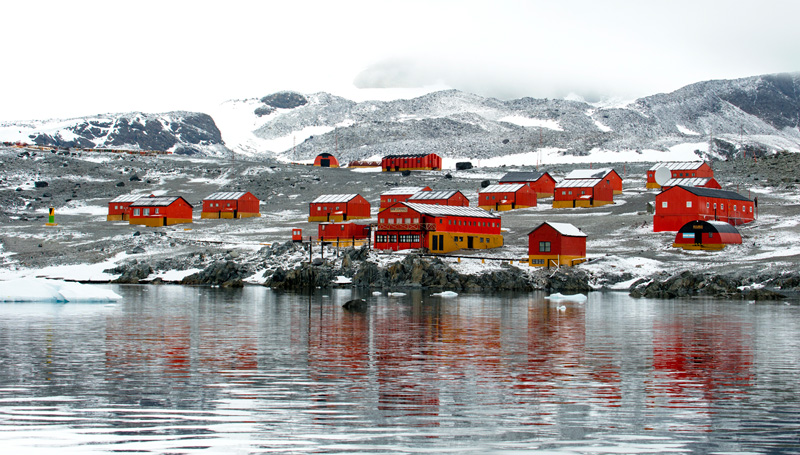 10/
Does anyone live (permanently)
in Antarctica? Are there towns there?
10/
Does anyone live (permanently)
in Antarctica? Are there towns there?
No one lives in Antarctica
permanently, there are bases and settlements that look like
towns, but they are places where people arrive and stay
for anywhere between about 3 and 18 months, there are always
people there at many of them, but the people quickly move
on. The purpose of the bases is to do science stuff, if
you aren't part of the scientific or support teams you
can' really visit or stay there.
more on
living in Antarctica
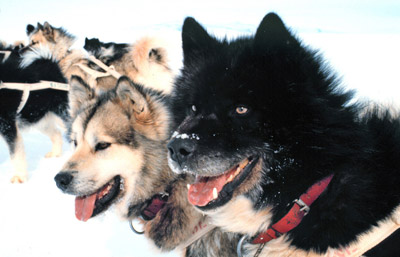 11/ Do they sometimes use huskies in expeditions?
11/ Do they sometimes use huskies in expeditions?
In the past but not any more. As a part of
the environmental protection, non-native species are
no longer allowed to be taken to Antarctica, the last huskies were
taken out in 1994. While they were really useful in the
early days up to about the 1960's, they were superseded
for transport many years before they were removed by motor
powered vehicles.
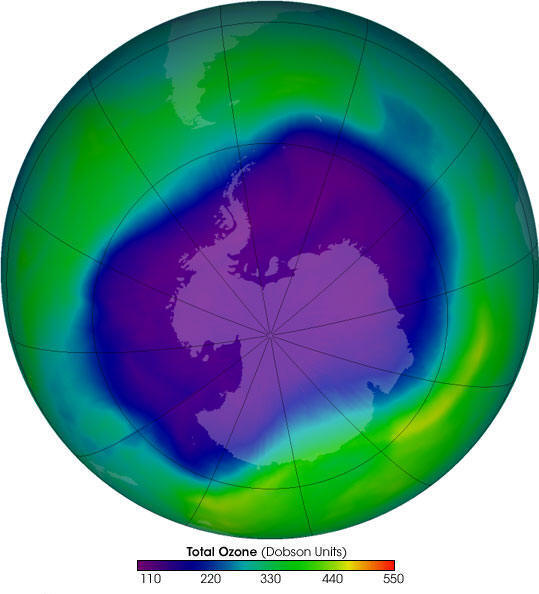 12/ How do you know the ozone layer is there
when you can't see it?
12/ How do you know the ozone layer is there
when you can't see it?
You can detect it with special
instruments. Like you can detect oxygen, carbon dioxide,
radio waves and electricity even though you can't see
them either.
The ozone "hole" is actually
an area of ozone thinning in the stratosphere which extends
from about 15-50 km (10-30 miles) above the earths surface
in the atmosphere, it appears annually over Antarctica with
the greatest extent in September. Ozone blocks dangerous
ultra violet light from the sun reaching the planets surface,
the hole also effects climate change.
13/ Are children
allowed to go to Antarctica?
Allowed to - yes, but don't
often go. Everyone who goes with a country's Antarctic
programme has a job to do, children don't have jobs
and so don't go. Children can go as tourists although
the cruises are very much aimed at adults and I imagine
most children would find them fairly boring for much of
the time - like a load of other things adults seem to enjoy.
There are two very small schools at the Argentinian
Esperanza Base and the Chilean Presidente Eduardo Frei Montalva
Base, both on the Antarctic Peninsula. The parents of these
children work at these bases.
Up to 2009, there were
eleven children born in Antarctica at either an Argentine
or Chilean base. They were part of a deliberate attempt
to strengthen national territorial claims.
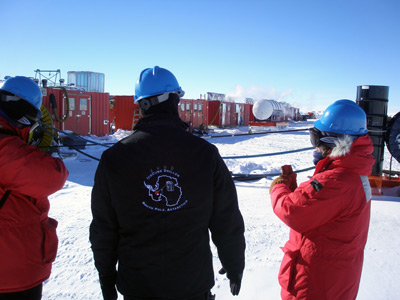 14/ What kind of jobs are there in Antarctica
and what is the lifestyle like?
14/ What kind of jobs are there in Antarctica
and what is the lifestyle like?
Antarctic bases exist for scientific
research, so the jobs are scientific or support for the
scientists, including but not limited to:
Scientific:
marine biologist, bird biologist, lake biologist, microbiologist,
atmospheric scientist, geologist, climatologist and lots
of other sorts of 'ologists!
Support:
radio operator, boatman, mechanic, electrician, doctor,
cook, diver, carpenter.
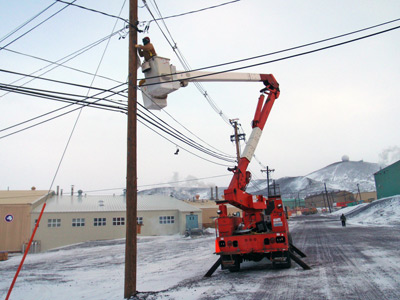 15/ Does Antarctica have electricity?
15/ Does Antarctica have electricity?
Yes it does. Usually provided
by diesel powered generators at each base, but increasingly
stations are installing wind turbines to generate supplementary
electricity.
This makes sense as Antarctica
is the windiest place on earth, but poses a problem in case
the strong winds damage the wind turbines. Every station
has to have its own electricity generating capability as
they are all self contained.
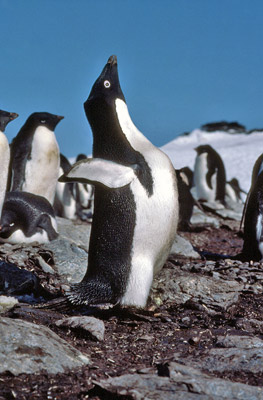 16/ What Sound do Penguins Make?
16/ What Sound do Penguins Make?
Penguins have harsh raucous
voices. They are somewhat variable in the adults but tend
to be a sort of loud "Awk", Jackass penguins are
named after the braying sound of their namesake and the
other species are not dissimilar. When courting, they make
gentler sounds of an elongated awwww.... ending in the inevitable
shouted "awk, awk, awk" with an associated display
as the penguin in the picture to the right is performing.
Penguin chicks on the other
hand make the same sort of cute cheeping sounds that many
other birds make.
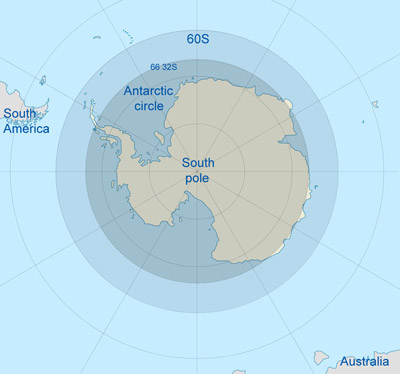 17/ What is the Antarctic Circle?
17/ What is the Antarctic Circle?
The Antarctic Circle is an
imaginary line that runs around the earth at 66°33'
44'' (66.5622°) South.
It encompasses the great majority
of the Antarctic continent and large areas of the Southern
Ocean. It is the line that marks where for at least one
day of the year, the sun is continually above or below the
horizon so giving 24 hours of daylight or night-time. On
the circle itself, there will just be one day a year of
each (full daylight at midsummer and then full night at
midwinter), the further you go south, the longer the period
of constant day or night until you get to the pole itself.
At the pole there is 6 months of daylight followed by 6
months of night.
This situation is mirrored in the
north by the Arctic Circle.
Antarctica and its islands
are generally considered to be contained within the 60°
line of latitude.
Picture credit: : Group of 3 crabeater seals - Liam Quinn, used under Creative Commons 2.0 Share and Share Alike generic license.

